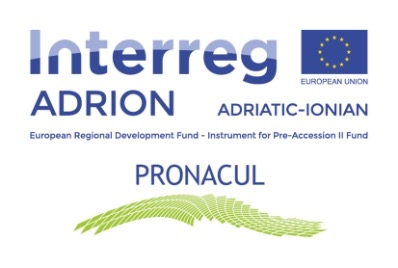Ιστορικό
On the outskirts of Stari Ras, the first capital of Serbia, there is an impressive group of medieval monuments consisting of fortresses, churches and monasteries. The monastery at Sopoćani is a reminder of the contacts between Western civilization and the Byzantine world.
Stari Ras and Sopoćani is a serial property consisting of four separate components located in the Raška region of southern Serbia: Sopoćani Monastery, Djurdjevi Stupovi Monastery, Holy Apostles St Peter and St Paul Church (St Peter’s Church), and the archaeological site of the Medieval Town of Ras. The impressive collection of three ecclesiastical monuments dating from the 10th to the 13th centuries eminently illustrates the birth of artistic activity in medieval Serbia, which attained the highest standards in the art and culture of the Byzantine Empire and the regions of Central and Southeastern Europe. The unique architectural complex formed by numerous structures in Stari Ras (Old Ras), situated at a crossroads of eastern and western influences,testifies to the period from 12th to the early 14th centuries when the ancient town was the first capital of the Serbian state.
The frescoes in the Sopoćani Monastery church, dating from about 1270-1276, are among the finest in Byzantine and Serbian medieval art. These exceptional paintings represent the work of the best artists of that period who were unable to work in the territory of the Byzantine Empire and found refuge at the court of the Serbian king. At Sopoćani these artists introduced a refined spirit of antiquity to the prevailing medieval conventions. St George’s Church in the Djurdjevi Stupovi Monastery, founded in 1170-1171, is the earliest example of a distinctive new regional architecture that blended Romanesque and Byzantine styles. Known as the Raška School, this style came to dominate architecture in this area for almost a century and a half. The church also features two layers of preserved frescoes dating from 1175 and 1282-1283 that are among the finest from that period in the Balkans. The preserved frescoes in St Peter’s Church, built in the 10th century on the foundations of a 6thcentury baptistery and now the oldest surviving Christian church in the Balkans, also present evidence of the developments that took place in pictorial art between the 10th and 14th centuries.
Stari Ras is located along the mountainous setting near the confluence of the Raška and Sebečevo rivers, and it became the first capital of the Serbian independent state on the accession of the Nemanjić dynasty in 1159. It was the focal point of all the decisive events underlying the state’s birth, development and consolidation. Now an archaeological site, it contains the remains of structures built from about the 9th century onwards, including the hilltop fortress of Gradina and the lower town of Trgovište. The combination of historical, cultural, artistic and natural values gives this group of monuments its significance. Together, they represent a unique contribution of the Serbian nation to the culture of Slavonic and other nations during the Middle Ages.
